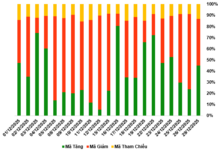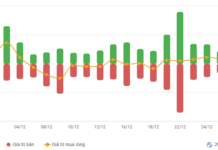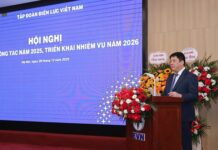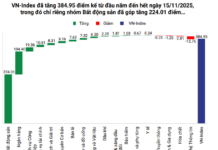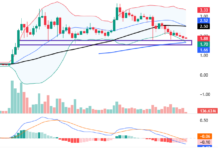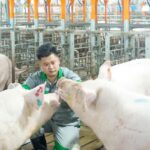On August 2nd, Vice Chairman of the National Assembly Le Minh Hoan conducted a field survey of the Ho Chi Minh Road project, specifically the Rach Soi – Ben Nhat and Go Quao – Vinh Thuan sections, passing through An Giang and Ca Mau provinces.
With a total length of nearly 52km and an initial investment of over VND 3,900 billion from the state budget, the project is managed by the Ho Chi Minh Road Project Management Unit. The road is designed with two lanes, allowing a speed of 80km/h, and a road width of 12m. In the completion phase, it will be expanded to four lanes with a width of 22.5m.
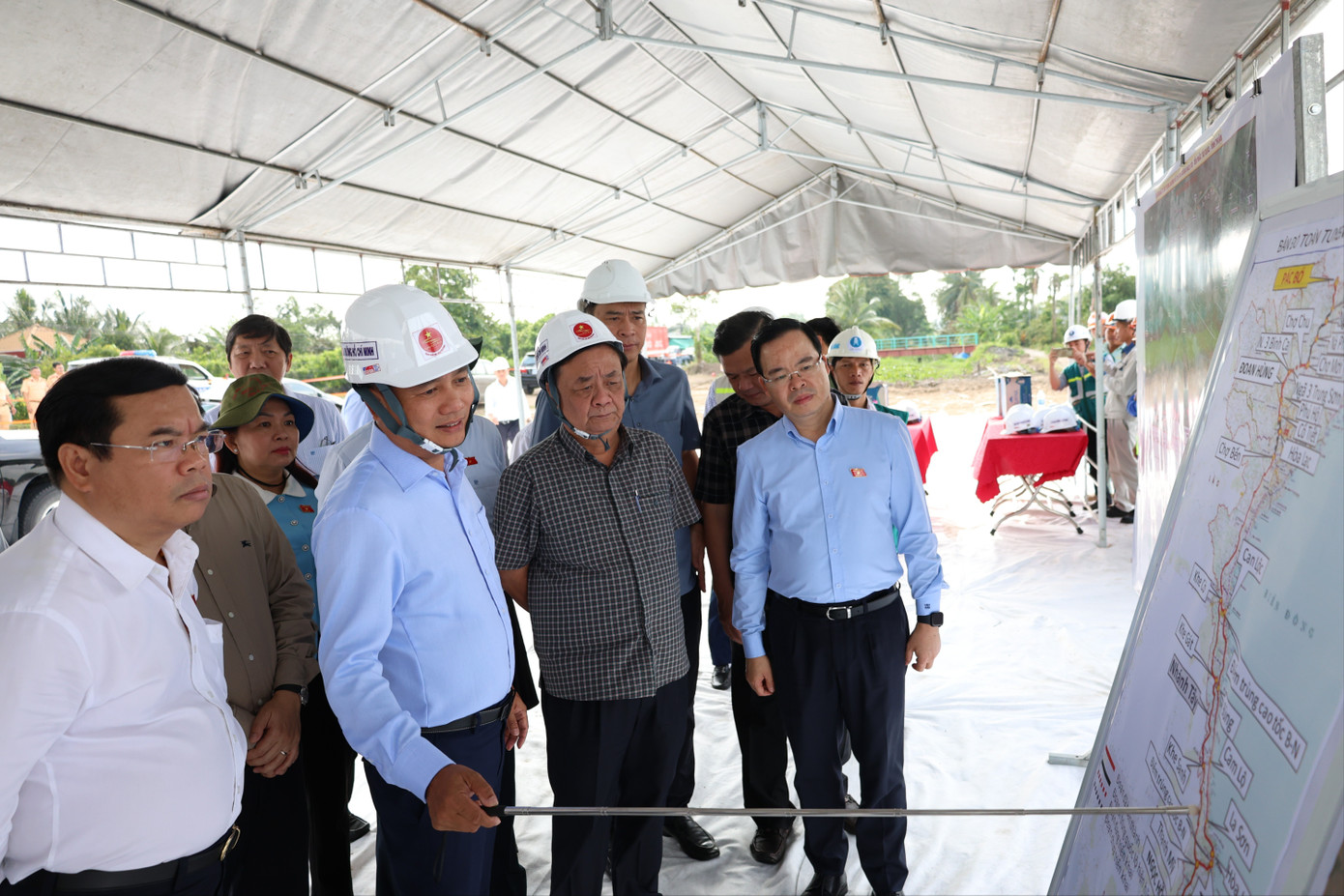
Vice Chairman of the National Assembly, Le Minh Hoan, surveys the Ho Chi Minh Road project.
Despite commencing in March 2024, the project has only achieved a construction output of approximately VND 1,100 billion, equivalent to over 42%, lagging almost 10% behind schedule. Challenges include a shortage of filling materials, with over 2.4km of land yet to be handed over, including a bridge location, nine intersections with power lines, and 0.5km of water pipelines.
According to the Ho Chi Minh Road Project Management Authority (the investor), although the project benefits from a special mechanism, many localities in the region are implementing key transport infrastructure projects, making it difficult to allocate quarries for this project, especially sand for filling. Thus far, contractors have only extracted 40,000m³ of sand from Hoa Hung 1 Quarry in Dong Thap, leaving a deficit of over 1.2 million m³ of sand and 200,000m³ of construction stone.
Additionally, while the construction period is only 22 months, soil treatment alone takes 10-12 months. If the loading process is completed by October 2025, the earliest completion date for the final line would be mid-2026.
During the working session, Le Van Sau, Deputy Director of the Ho Chi Minh Road Project Management Authority, acknowledged the project’s delay and the unlikelihood of meeting the 2025 completion goal set by the National Assembly’s Resolution. He attributed the primary cause to land clearance complications, with 71 households yet to hand over their land, as well as unresolved issues with power lines and water pipelines.
Mr. Sau further emphasized the project’s critical shortage of filling sand. The surrounding area hosts multiple concurrent longitudinal and lateral expressway projects, leading to a dispersed and shared source of materials. Currently, the project requires an additional 1.2 million m³ of filling sand and over 200,000 m³ of construction stone.
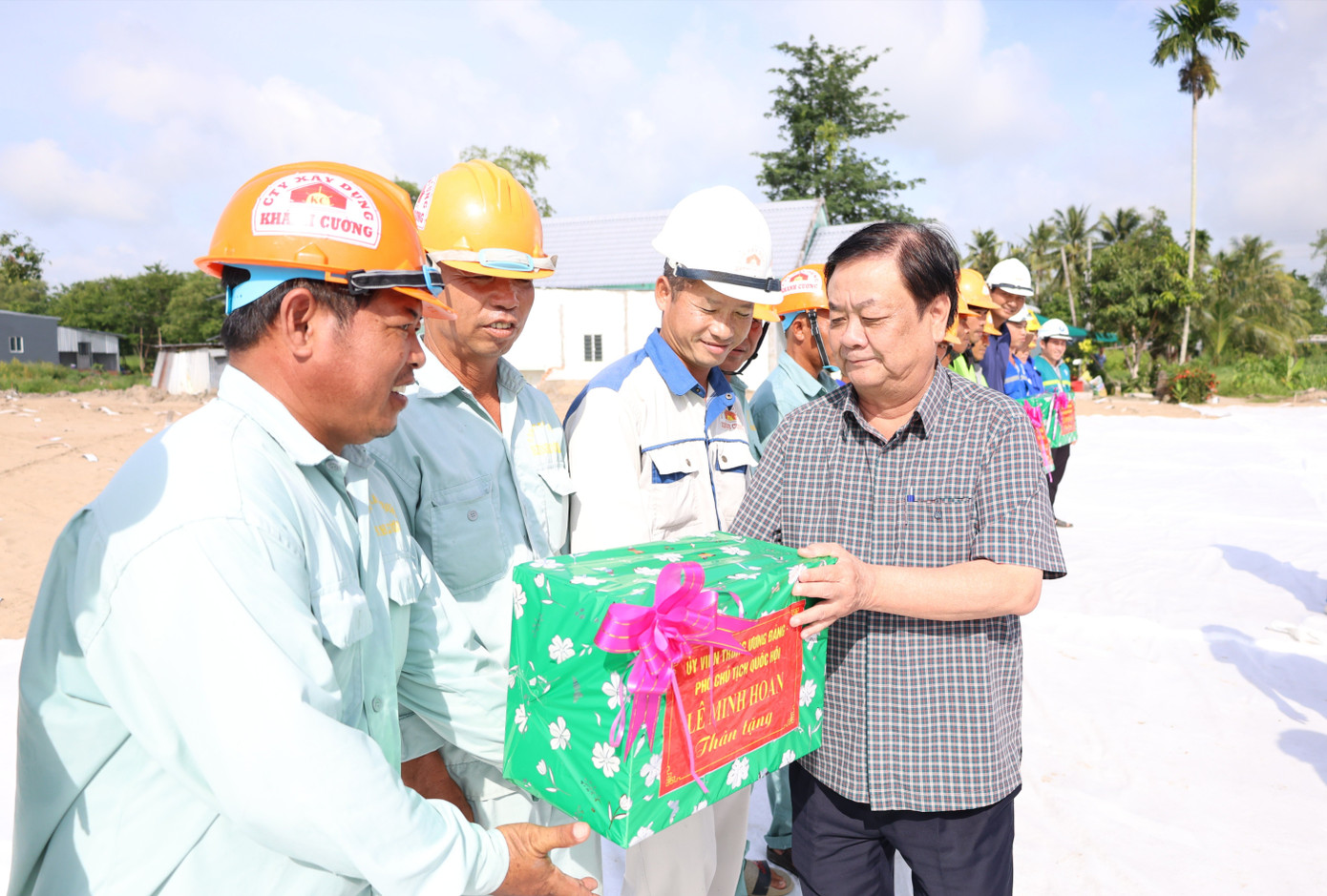
Vice Chairman Le Minh Hoan presents gifts to workers at the construction site.
Pham Minh Ha, Deputy Minister of Construction, requested that An Giang province conduct a comprehensive review of material sources within its jurisdiction to prioritize the project. Regarding the 9.6 million m³ sea sand quarry, he advised assessing its exploitability due to significant depth. Additionally, Mr. Ha urged clarifying the responsibilities of relevant parties in the delay.
In conclusion, Vice Chairman of the National Assembly Le Minh Hoan proposed that the Ministry of Construction coordinate with localities to finalize the report and submit it to the National Assembly for consideration of adjusting the project timeline toward feasibility.
Addressing the project’s challenges, Mr. Hoan instructed the investor and An Giang provincial leaders to rigorously assess and rectify any shortcomings and errors for more effective implementation. He emphasized the importance of timely project completion to benefit the people and boost socio-economic development, especially for a project bearing the name of the beloved leader, Ho Chi Minh.

Vice Chairman Le Minh Hoan speaks at the working session. Photo: P.V
Mr. Le Minh Hoan also urged local authorities to expedite land clearance, ensuring transparency and fair compensation for affected residents. He emphasized the need for clear delineation of tasks and accountability among units involved in the process.
Regarding the shortage of construction materials, Mr. Hoan suggested establishing a central coordinating agency to regulate the distribution of sand and stone among key transport infrastructure projects.
“A Flourishing Business Landscape: Vietnam Witnesses 107,700 New Enterprises in the First Seven Months of 2025”
According to the latest statistics from the General Statistics Office of Vietnam, in the first seven months of 2025, the country witnessed the establishment of 107.7 thousand new enterprises with a total registered capital of 928.4 trillion dong and 670 thousand registered employees. This signifies a notable 10.6% increase in the number of businesses compared to the same period last year.
What Will Propel New Capital into the Vietnamese Stock Market?
With the anticipated upgrade of the stock market in September, Vietnam is poised to attract foreign capital, particularly from financial institutions and foreign investment funds.
“Phát Đạt Repositions Its Investment Portfolio, Focusing on the Southern Market to Embrace the New Growth Cycle.”
As the real estate market enters a more selective and substantive recovery phase, businesses must reshape their strategies to adapt. Phat Dat Real Estate Development Corporation (HOSE: PDR) is demonstrating a clear and aggressive shift to capture the significant movements in planning, policies, capital flows, and consumer trends.
Corporate Bonds Rebound, Redemption Pressure Mounts
The Vietnamese corporate bond market is witnessing a notable recovery in both issuance and buyback activities, indicating a resurgence of investor and business confidence. However, alongside these positive signals, there is a mounting maturity pressure, particularly from the real estate sector, which faces significant challenges regarding cash flow and repayment capabilities.
“France-sourced Pigs Power BAF’s Ambitious 10 Million Pig Plan for 2030”
Amid the challenging ASF situation, BAF Vietnam Agriculture Joint Stock Company (HOSE: BAF) has imported a significant number of great-grandparent pigs from France for the Central Highlands region. This move aligns with the company’s ambitious goal of reaching 10 million commercial pigs by 2030. The Central Highlands is a key area in BAF’s strategy to expand its pig population, thanks to its favorable climate and vast land area, which are ideal for large-scale, closed-system farm models.


